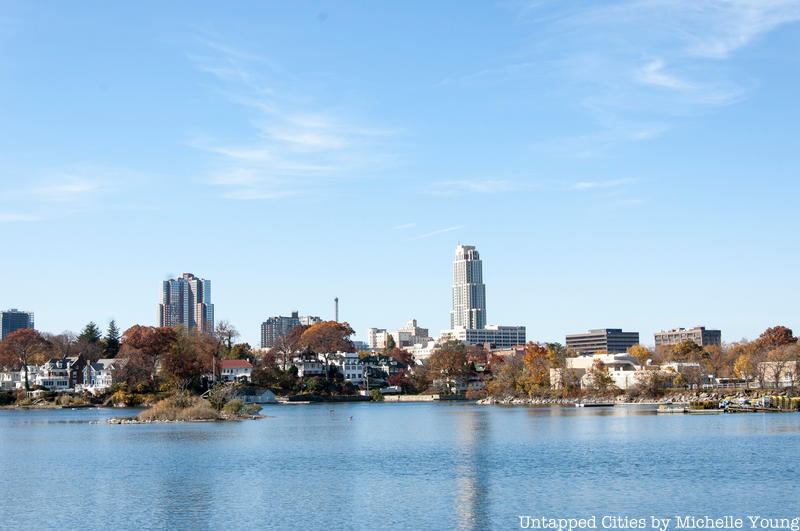
Just a thirty minute train ride from Grand Central Terminal, the City of New Rochelle has it all – whether you’re looking for a day trip out of New York City, seeking a more affordable place to live, or planning for a weekend getaway. There’s a historical downtown with beautiful architecture just steps from the train station, a diverse food scene with international flavors, gorgeous waterfront parks, a diverse and creative-minded population, and a distinctly urban-suburban feel for the best of both worlds.
New Rochelle has also re-emerged on the national main stage in the last few weeks, as one of the $1 million winners of the Bloomberg Philanthropy U.S. Mayors Challenge, in acknowledgement of the city’s innovative use of immersive virtual and augmented reality technologies for citizen engagement within the city development process. There’s certainly a need for it, as a 2015 rezoning of downtown New Rochelle has spurred a development renaissance that will bring over 6,000 new housing units, 2.4 million square feet of office space, 1 million square feet of retail, and 1,200 hotel rooms. New York City-based developer RXR Realty was designated as the Master Developer of downtown New Rochelle.
The City of New Rochelle also responded to the request for proposals for Amazon HQ2. In its application, the City highlighted its more than 8.6 million square feet of downtown space pre-approved for fast-track development, as well as its superior location, access to transportation, proximity to a talented and educated workforce, commitment to sustainability, and the availability of extensive government incentives. When Amazon’s HQ2 opens in Long Island City and when the Penn Access project is completed, New Rochelle will actually be the closest suburban train station to the headquarters, as Metro-North trains will pass directly through Long Island City en route to Penn Station.
Fifteen developments are in the works or in progress in downtown New Rochelle. If all goes according to plan, within the next few years, New Rochelle will re-emerge as a major player, uniquely situated to serve as not only a commuter city supporting New York City, but also as an economic driver in its own right within the greater region.
As Barbara Davis, the city historian of New Rochelle tells us, the renewed interest in New Rochelle is not surprising: “The city has attributes that have attracted people for a long time – people of all backgrounds and people of all interests: Its proximity to Manhattan but also its waterfront – we have 9.3 miles of waterfront, tremendous access with our parks, and all the recreation that that brings…And then we have the topography – it’s a very hilly, gorgeous tract of land that was first founded because it was so fertile…with lots of areas to experience nature, strong schools, and amazing neighborhoods.”
Get to know New Rochelle with our guide to the must-visit places to visit in the city!
Historical Sites
Huguenot Burial Ground at Trinity-St. Paul’s Episcopal Church
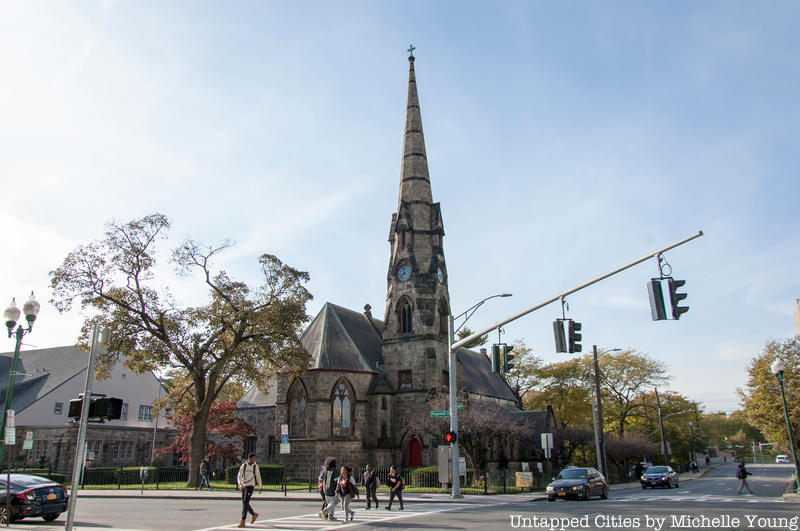
New Rochelle was founded in 1688 by French Huguenots, a Protestant religious group who fled France when the Edict of Nantes, which gave Protestants significant rights within the Catholic country, was revoked by King Louis XIV. Many of the early settlers came from La Rochelle, a seaside port town in Western France that remains a sister or twin town to New Rochelle.
At the center of the settlement of New Rochelle was the church, which originally encompassed one hundred acres, around which the residents built their homes. In 1709, the congregation decided to become part of the Church of England, taking the name Trinity, and after the American Revolution the church became Trinity Episcopal Church. With this history, it’s no coincidence that Richard Upjohn, the architect of Trinity Church on Wall Street in Manhattan, designed the church that stands today on Huguenot Street.
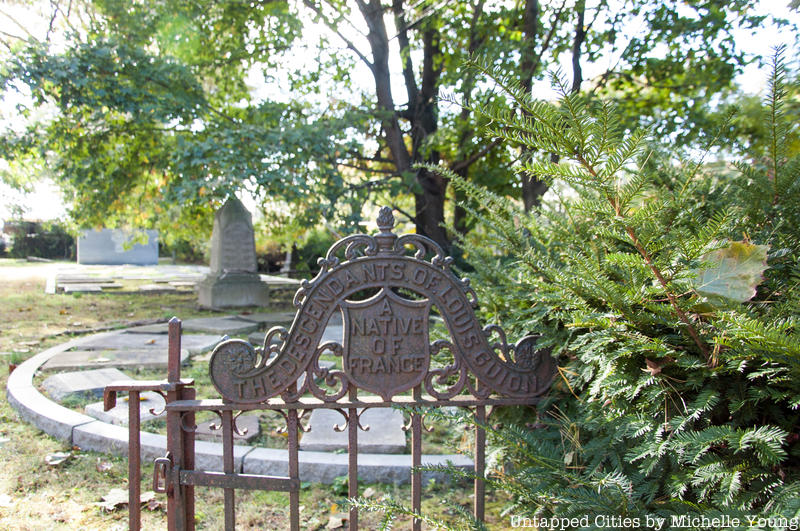
The church is also home to the Huguenot burial ground, which was relocated here after the I-95 expressway cut through the original cemetery. Look out for the section dedicated to the Allaire family, whose tombstones were all deliberately placed down, as well as the oldest tombstone in the cemetery, dating to 1750 which is inscribed in French.
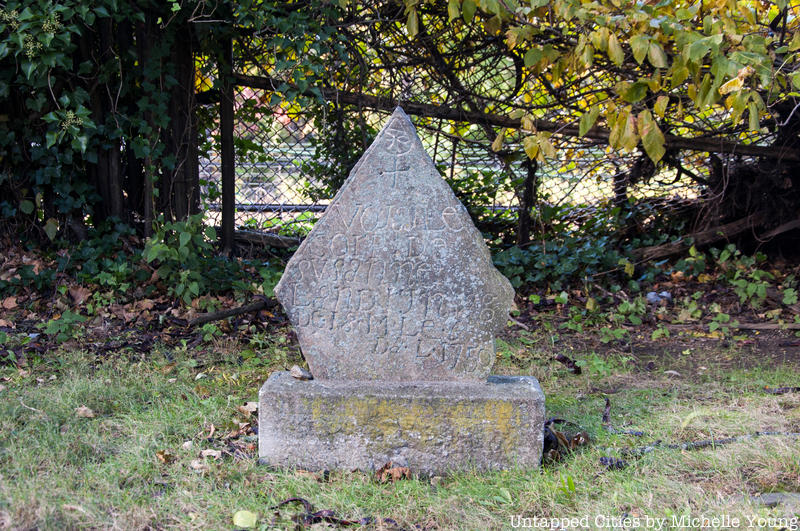 The oldest tombstone in the Huguenot cemetery
The oldest tombstone in the Huguenot cemetery
A marker for William Allaire is situated just outside the family plot along the fence and tells the story of his involvement as an engineer and assistant to Lieutenant Commander H.H. Gorringe in the epic moving of Cleopatra’s Needle, the ancient Egyptian obelisk, from Alexandra to New York City where it has been located in Central Park since 1881.
Trinity-St. Paul’s Episcopal Church is located at 322 Huguenot Street.
Thomas Paine Cottage
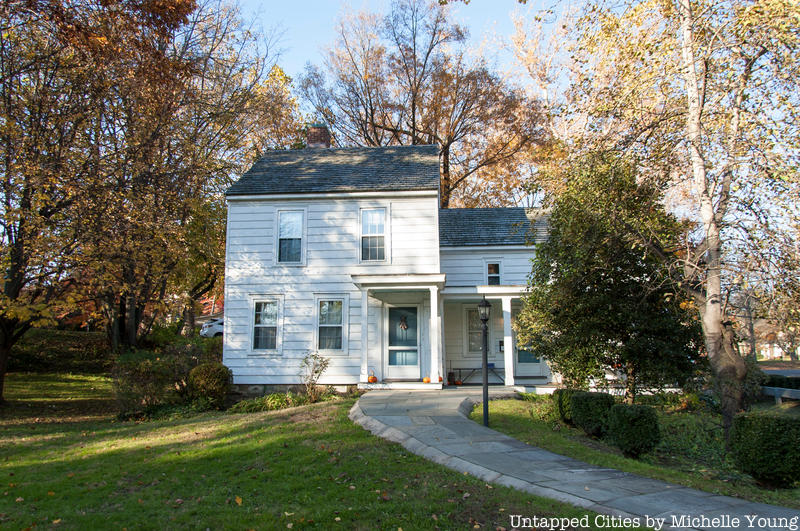
New Rochelle was also home to an important Revolutionary War figure: Thomas Paine, author of Common Sense, the influential pamphlet that “went viral” throughout the American colonies and put forth a clear, easy-to-understand rationale for independence from the British crown. In 1784, the State of New York gave Paine a 277-acre farm, confiscated from a British supporter, as a tribute to his role in the war. When Paine returned from France in 1802 (where he was arrested for almost a year for his role in the French Revolution), he lived in a cottage on the farm for four years, even surviving an assassination attempt on the first floor. Paine wrote his last pamphlet while living here, entitled “Constitutional Reform.”
Today, the Thomas Paine Cottage sits in a small park close to New Rochelle High School, moved from its original location but within the original farmstead property. It is open to the public as a museum on Thursdays, Saturdays, and Sundays, run by the Huguenot & New Rochelle Historical Association.
The Thomas Paine Cottage is located at 20 Sicard Avenue.
New Rochelle High School
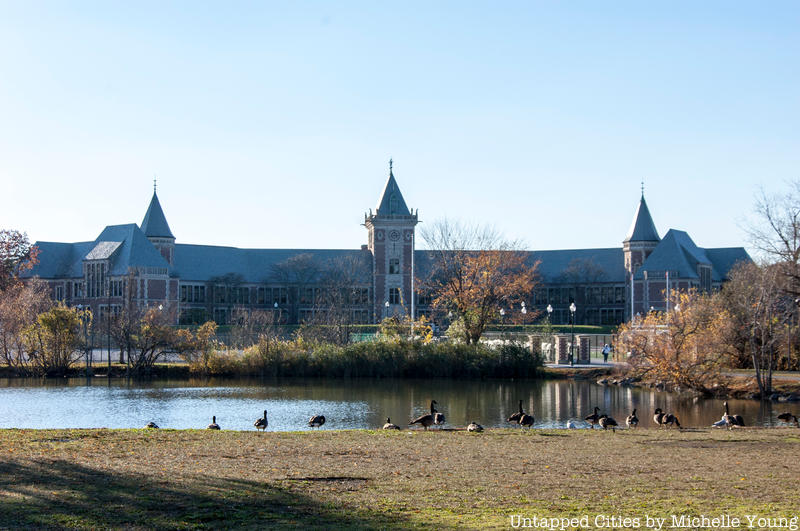
Located next to the Thomas Paine Cottage, New Rochelle High School is quite possibly one of the most stunningly situated high schools in the nation. The Collegiate Gothic brick building with carved stone details, reminiscent of a European castle, emerges from behind a lake. The school was designed by the firm of Guilbert and Betelle, known for their work on many East Coast schools, many of which are listed on the National Register of Historic Places. The high school is the only high school in New York State to house a museum (and it also has a planetarium!).
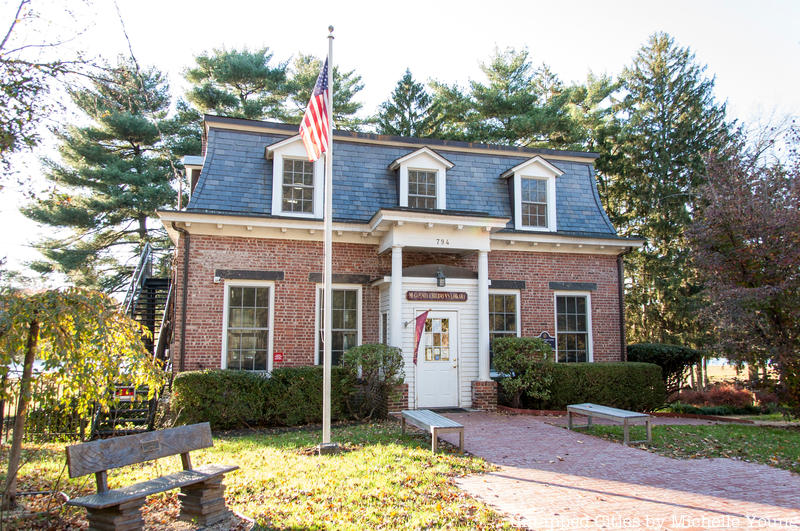 Huguenot Children’s Library
Huguenot Children’s Library
The lake in front of New Rochelle High School was once part of an ice manufacturing business run by the Mahlstedt family. Along North Avenue, an adorable brick library, the Huguenot Children’s Library (a branch of New Rochelle Public Library), was the home of the Mahlstedt family for three generations starting in 1869. The library was saved by citizen activism following a closure in 1992 during the financial crisis. An all-volunteer committee raised funds to renovate and rehabilitate the building and operate the library. Today, now fully funded by the City of New Rochelle, the Huguenot Children’s Library is the only freestanding children’s library in Westchester. Just next door the library is Jack’s Friendship Garden, a playground for children of all ages and abilities.
New Rochelle High School is located at 265 Clove Road and the Huguenot Children’s Library is located at 794 North Avenue.





